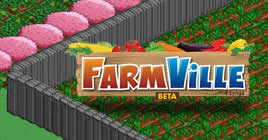The Mobile Radicals Research Group, from Lancaster, UK, today presented their paper “Harnessing creativity to broaden the appeal of location-based games” at the HCI2010 conference.
Kate Lund from the group highlighted the limitations of the few location-based games that have reached the public attention. For example Foursquare and Gowalla have very simple actions and very limited gameplay. The group had took inspiration from geo-caching, noting that is is inclusive and easy to do, but has limited appeal.
They re-invented geo-caching as a game for families and children, creating a new mobile game called “Free All Monsters”. Children can use their creativity to draw monsters, these monsters then get transplanted into the real world, where they and their friends can then use a “Magical Monstervision Machine” (a Nokia N95 running special software) to detect and find monsters in the real world. The display overlays the sensor information and monster pictures onto the real world, much like Layar and other augmented reality applications:
The game reinvents geocaching in a creative, understandable way. For example, the strength of the GPS fix is represented as a “Captoplasm” gauge – you can’t capture monsters if you haven’t got enough. The game reinforces creativity throughout. Children’s monster creations are added to a “Liber Monstorum” (book of monsters), which is used to populate the game world – personalizing the game to the players.
Players also have a “Monster Spotter’s Guide” (which helps encourage teamwork) and have a set of thought-provoking questions for players to answer for each discovery, like “What does this monster dream?” or “Where would he go on holiday?”
The game is also designed to keep players focussed on the real world (which is why the camera augmentation approach is chosen) and favours teamwork and fun over speed and competitiveness.
The game has been used successfully on a small scale at a number of outdoor open days, and will soon be released for use anywhere in the world as an iPhone application (early video here).
There’s more about the group and their research at mobileradicals.com







 @
@ Tags:
Tags: 





 Like all images on the site, the topic icons are based on images used under Creative Commons or in the public domain. Originals can be found from the following links. Thanks to
Like all images on the site, the topic icons are based on images used under Creative Commons or in the public domain. Originals can be found from the following links. Thanks to